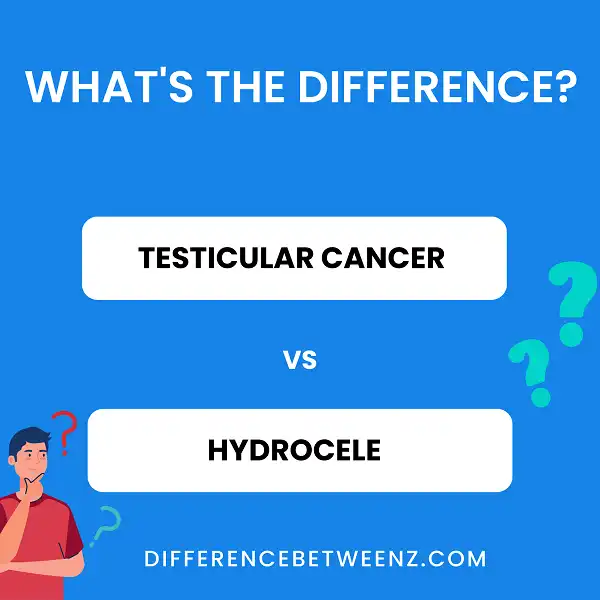Although both testicular cancer and hydrocele are common issues among men, they are two very different conditions. Testicular cancer is a type of cancer that develops in the testicles, while hydrocele is a benign (noncancerous) condition that causes fluid to collect in the scrotum. If you are experiencing any symptoms that could be indicative of either condition, it is important to seek medical attention right away. Here’s more information on the difference between testicular cancer and hydrocele.
What is Testicular Cancer?
Testicular cancer is a type of cancer that affects the testicles, which are the male reproductive glands. The testicles produce sperm and testosterone, the main male hormone. Testicular cancer is the most common type of cancer in young men between the ages of 15 and 34.
It is also one of the most treatable forms of cancer if it is caught early. Testicular cancer usually begins in the cells that produce sperm. These cells are called germ cells. Testicular cancer can also begin in the supporting cells of the testicles, which are called stromal cells.
Testicular cancer is rare, but when it does occur, it is usually in young men between the ages of 15 and 35. The cause of testicular cancer is unknown, but there are certain risk factors that may increase your chances of developing the disease.
These include a family history of testicular cancer, undescended testicles, and previous history of testicular cancer. Testicular cancer is usually diagnosed with a physical exam, ultrasound, or CT scan. Treatment for testicular cancer may include surgery, radiation therapy, or chemotherapy.
What is Hydrocele?
A hydrocele is a condition in which fluid accumulates around the testicle, resulting in a bloated or swollen appearance. The condition is relatively common, affecting around 1 in every 200 newborn boys. In most cases, hydroceles resolve on their own within the first few months of life. However, some may require surgical intervention. Hydroceles can also occur in adults, though this is much less common. Hydroceles are typically benign and pose no serious health risks. However, they can occasionally be associated with more serious conditions, such as testicular cancer. As a result, it is important to see a doctor if you or your child develop any unusual swelling in the groin area.
Difference between Testicular Cancer and Hydrocele
Testicular cancer and hydrocele are two conditions that can affect the testicles.
- Testicular cancer is a type of cancer that develops in the cells of the testicles. A hydrocele is a condition in which fluid accumulates around the testicle, causing it to swell. Both conditions can cause pain and discomfort and may require treatment.
- Testicular cancer is typically treated with surgery, radiation therapy, or chemotherapy. Hydrocele is often treated with surgery to remove the fluid. In some cases, the hydrocele may resolve on its own without treatment.
- However, if the condition is severe or causes pain, surgery may be necessary. Testicular cancer occurs more frequently in men between the ages of 20 and 40, while hydrocele is more common in newborns and infants.
- Testicular cancer is more likely to cause symptoms such as a lump in the testicle or pain in the lower abdomen, while hydrocele typically does not cause symptoms.
Testicular cancer is a serious condition that can be fatal if left untreated, while hydrocele is generally not life-threatening. Early detection and treatment of testicular cancer can improve the chances of full recovery.
Conclusion
While a hydrocele is not a serious condition, it can be a sign of something more serious. If you are experiencing any symptoms related to hydrocele, please see your doctor right away. Testicular cancer, on the other hand, is a much more serious condition and should not be ignored. If you have any concerns about testicular cancer or suspect that you may have it, please seek medical attention immediately. Early diagnosis and treatment are key in fighting this type of cancer. We hope this article has helped clear up some of the confusion between these two conditions and that you now feel better equipped to deal with them both.


